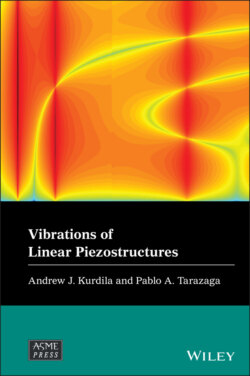Читать книгу Vibrations of Linear Piezostructures - Andrew J. Kurdila - Страница 13
1 Introduction 1.1 The Piezoelectric Effect
ОглавлениеIn the most general terms, a material is piezoelectric if it transforms electrical into mechanical energy, and vice versa, in a reversible or lossless process. This transformation is evident at a macroscopic scale in what are commonly known as the direct and converse piezoelectric effects. The direct piezoelectric effect refers to the ability of a material to transform mechanical deformations into electrical charge. Equivalently, application of mechanical stress to a piezoelectric specimen induces flow of electricity in the direct piezoelectric effect. The converse piezoelectric effect describes the process by which the application of an electrical potential difference across a specimen results in its deformation. The converse effect can also be viewed as how the application of an external electric field induces mechanical stress in the specimen.
While the brothers Pierre and Jacques Curie discovered piezoelectricity in 1880, much the early impetus motivating its study can be attributed to the demands for submarine countermeasures that evolved during World War I. An excellent and concise history, before, during, and after World War I, can be found in [43]. With the increasing military interest in detecting submarines by their acoustic signatures during World War I, early research often studied naval applications, and specifically sonar. Paul Langevin and Walter Cady had pivotal roles during these early years. Langevin constructed ultrasonic transducers with quartz and steel composites. Shortly thereafter, the use of piezoelectric quartz oscillators became prevalent in ultrasound applications and broadcasting. The research by W.G. Cady was crucial in determining how to employ quartz resonators to stabilize high frequency electrical circuits.
A number of naturally occurring crystalline materials including Rochelle salt, quartz, topaz, tourmaline, and cane sugar exhibit piezoelectric effects. These materials were studied methodically in the early investigations of piezoelectricity. Following World War II, with its high demand for quartz plates, research and development of techniques to synthesize piezoelectric crystalline materials flourished. These efforts have resulted in a wide variety of synthetic piezoelectrics, and materials science research into specialized piezoelectrics continues to this day.
